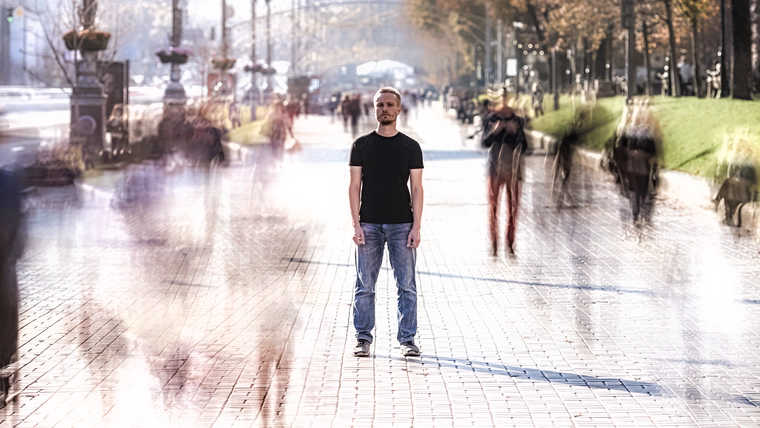Hallucinogens Show Potentially Deadly Rise in Use
Hallucinogens can disrupt a person’s ability to think and communicate rationally, or even to recognize reality, sometimes resulting in bizarre or dangerous behavior.

Learning about the different mind-altering substances used in America is a good start in enabling one to combat this problem. But it’s equally important to monitor usage trends and statistics surrounding each substance. Knowledge of a drug’s popularity among users and the general statistics of its use allows people to understand the scope of a drug’s harm. Such knowledge further empowers individuals to help their loved ones should they start experimenting with drugs.
Defining Hallucinogens
Hallucinogens refer to a category of mind-altering substances. A hallucinogen is any drug that dramatically affects the user’s mental and cognitive state, seeming to transport them into an entirely different reality. This effect is quite different from other drugs that produce feel-good sensations. Some hallucinogens are plant-based, like salvia. Others are manufactured, like LSD. Examples of hallucinogens include:
- Psilocybin
- Mescaline
- DMT
- Ayahuasca
- PCP
- Ketamine
- DXM
- Salvia
- LSD
The Scope of Hallucinogen Abuse
The popularity of different types of hallucinogenic drugs rises and falls with the times. As of a 2020 report by the Substance Abuse and Mental Health Services Administration (SAMHSA), about seven million Americans currently use hallucinogens, with 1.4 million new users annually.1
According to the National Institute on Drug Abuse (NIDA), hallucinogens seem particularly popular among college and non-college students in the same age bracket. As of 2020, about 9% of college students report experimenting with LSD, psilocybin mushrooms, and other psychedelic substances. Concerningly, that percentage is up from 5% in 2019. In 2020, about 10% of non-college students in this age bracket experimented with hallucinogens, compared to 8% in 2019.2
Trends Surrounding Hallucinogens and Circumstances that Lead to Experimentation
In a 2021 report, NIDA confirmed SAMHSA’s 2020 data regarding the scope of hallucinogen abuse. According to NIDA’s research, about 2.6% of the U.S. population that is 12 or older misuses hallucinogens yearly (equivalent to the 7 million users as reported by SAMHSA). NIDA goes further, though, and explores usage trends among young people. According to their findings:3

-
About 1% of 8th graders, 2.2% of 10th graders, and 4.1% of 12th graders use a hallucinogen each year.
-
Approximately 0.7% of 8th graders, 1.5% of 10th graders, and 2.5% of 12th graders use LSD each year.
-
An estimated 0.8% of 8th graders, 1.5% of 10th graders, and 2.9% of 12th graders report using hallucinogens that are not LSD each year.
-
Survey data suggest that 0.9% of 12th graders use ketamine each year.
-
The report indicates that 0.5% of 8th graders, 0.4% of 10th graders, and 0.6% of 12th graders use salvia each year.
-
When viewed all together, NIDA researchers estimate that about 372,000 Americans, or 0.1% of the population over the age of 12, are addicted to hallucinogenic drugs.
Overdose Statistics, is it Possible to Die from Using Hallucinogens?
Overdoses from hallucinogens are rare, but they do occur. More often, a death connected to such drugs will also involve a destructive behavior partially caused by drug use (like suicide, accidents, or dangerous, reckless behavior). But addicts can overdose on PCP or ketamine, with overdose symptoms including respiratory depression, coma, convulsions, seizures, and fatal respiratory arrest.4
A relatively new hallucinogen called 251-NBOMe has been connected to several fatalities and serious medical emergencies. This new drug is a hybrid formulation with similarities to both LSD and MDMA. It was initially developed for brain research but is now sold illegally for its mind-altering effects.5
“Hallucinogens and dissociative drugs distort the way a user perceives time, motion, colors, sounds, and self. These drugs can disrupt a person’s ability to think and communicate rationally, or even to recognize reality, sometimes resulting in bizarre or dangerous behavior…”

Finally, even when hallucinogens do not cause life-threatening conditions, they are still quite harmful. NIDA Director Dr. Nora Volkow writes about this. In her words, “Hallucinogens and dissociative drugs distort the way a user perceives time, motion, colors, sounds, and self. These drugs can disrupt a person’s ability to think and communicate rationally, or even to recognize reality, sometimes resulting in bizarre or dangerous behavior. Hallucinogens cause emotions to swing wildly and real-world sensations to appear unreal, sometimes frightening. Dissociative drugs like PCP, ketamine, dextromethorphan and Salvia divinorum may make a user feel out of control and disconnected from their body and environment.” Truly, hallucinogen drugs are harmful and should be avoided.6
Understanding the scope of hallucinogen use, trends surrounding use, and statistics of usage and resulting harm enables people to combat this public health problem effectively.
Sources:
-
SAMHSA. “Key Substance Use and Mental Health Indicators in the United States: Results from the 2020 National Survey on Drug Use and Health.” SAMHSA, 2020. samhsa.gov ↩︎
-
NIDA. “Marijuana use at historic high among college-aged adults in 2020.” NIDA, 2021. nida.nih.gov ↩︎
-
NIDA. “What is the scope of hallucinogen use in the United States?” NIDA, 2021. nida.nih.gov ↩︎
-
NIDA. “Hallucinogens DrugFacts.” NIDA, 2021. nida.nih.gov ↩︎
-
NIDA. “Hallucinogens and Dissociative Drugs Research Report.” NIDA, 2015. nida.nih.gov ↩︎




 ®
®